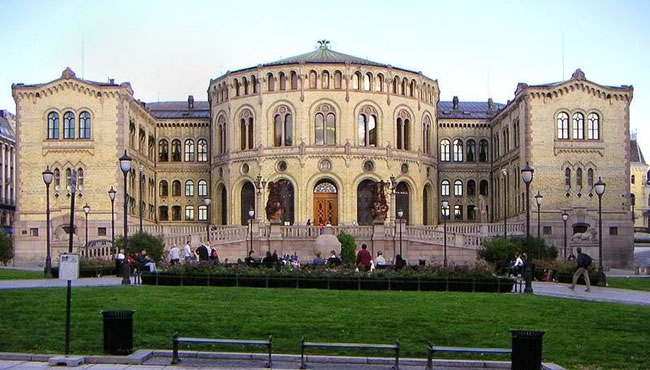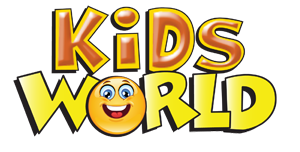Amazing Facts » Norway

Interesting Facts About Norway
Norway is located in northern Europe, in Scandinavia, and is positioned above the Arctic Circle It is a part of Scandinavia and is neighbours with Denmark, Finland and Sweden. It is bordered by Finland and Russia to the Northeast, and shares a long eastern border with Sweden.
The total area of Norway is about 323,800 square kilometres according to the United Nations Statistics Division, and is considered the 68th biggest country on the planet. Norway is an extremely beautiful, albeit rough nation consisting of mountains and icy masses. The land is mostly made of hard granite and gneiss rock. About 70% of Norway is secured by mountains, ice sheets, streams and ice-fields. The many overwhelming fjords that cut into the coastline give Norway a general oceanfront of more than 19,312 kilometres. Sognefjorden is the largest fjord in Norway and is also the third largest in the world, and stretches 205 kilometers inland from the ocean.
The National Geographic has classified the Norwegian fjords as one of the world's top holiday destinations. Geographically, Norway lies between latitudes 57° and 81° N, and longitudes 4° and 32°. Norway got its independence as an unique country in 1905. Its population, as on January 2016 was 5.1 Million and its population density is about 16 people per square kilometre as of January 2016.
Norway has also attracted many immigrants from Southern and Central Europe, Africa, Asia and the Mideast, since the 20th century. They speak many different languages and come from different religions and cultures.
Norwegian is the main language of Norway, and it is a Germanic language, which is very similar to Danish and the Swedish languages. Nearly all Norwegians speak English, as it is taught in schools as a compulsory second language.
Most Norwegians are registered at baptism as members of the Church of Norway. The population of Norway is ethnically homogenous.
Norway is the fifth-largest oil exporter and third-largest gas exporter in the world. The government controls its petroleum resources through a combination of state ownership in major operators in the oil fields and the fully state-owned Petoro. Export revenues from gas and oil have risen up to almost 50% of total exports and constitute more than 20% of the GDP.
Other most valuable minerals are calcium carbonate, building stone, olivine, iron, nickel, titanium, and other noteworthy mineral assets. Norway has the world's biggest enrolled supply of module electric vehicles per capita with, Oslo being considered as the EV capital of the world.
The standard of living in Norway is among the highest in the world. Public health care in Norway is free. Norway ranks as the second-wealthiest country in the world in monetary value with the largest capital reserve per capita of any nation. Large reserves of petroleum and natural gas were discovered in the 1960s. The country is richly endowed with natural resources including fish, hydropower, petroleum, minerals and forests. The state wage got from regular assets incorporates a noteworthy commitment from petroleum creation.
Due to the narrow shape, long coastlines and low population density of Norway, its public transport is less developed than in many European countries. Norway's main railway network consists of 4,200 kilometres of standard gauge lines. Norway has roughly 92,946 kilometres of street system. Interest in new framework and support is financed through the state spending plan.
Education in Norway is mandatory for all children aged between six and sixteen. Advanced education in Norway is offered by a scope of seven colleges, 25 college schools, five particular universities and in addition a scope of private universities. Free State funded training is available for all students, and they pay little heed to nationality. The scholarly year has two semesters, first from August to December and second from January to June. The North Germanic Norwegian dialect has two authority-composed structures, Nynorsk and Bokmål. Both of them are recognised as official languages and both are used in public administration, churches, media and schools. Bokmål is the written language used by a large majority of about 80–85%.
To promote writing, when you publish a book in Norway, the Government will buy and distribute thousand copies to libraries. Additionally, Norway's public Universities are free for any students from anywhere in the world. Norwegians also read more than any other population in the world, spending an average of US$100 a year per capita on books. Also over 2,000 new books are published every year.
The Norwegian farm culture inspired a strong romantic nationalistic movement, which is still visible in the media and Norwegian language. The Norwegian farm culture continues to play a role in contemporary Norwegian culture. Affiliation football is the most well-known game in Norway as far as dynamic participation. Games are a focal piece of Norwegian society. Other than football, mainstream sports include biathlon, ski hopping and to a lesser degree, cross-country skiing, and ice hockey. Norway initially took part in the Olympic Games in 1900 and has sent competitors to compete in each Games.
A maritime climate prevails over most of the coastal islands and lowlands. The warm waters of the North Atlantic Drift (an expansion of the Gulf Stream) stream along the Atlantic shore of Norway and, have a declared directing impact on the atmosphere. The waterfront atmosphere of Norway is especially gentle in comparison to somewhere else on the planet. Oslo, in comparison is very dry, being in a rain shadow. There is very high rainfall at areas exposed to the Atlantic, like as Bergen.
Now for some interesting facts;
Norway introduced the Salmon Sushi to the Japanese during the 80s. Incidentally, Norway is also the largest exporter of salmon in the world.
Due to the high number of forests, Norway has had a tradition of building in wood. Many of today's most interesting new buildings are made of wood, which reflects the strong appeal that the material continues to hold for Norwegian builders and designers.
Norway was awarded first place according to the UN's Human Development Index (HDI) for 2013. Norway was also ranked the number one country in the 2014 Prosperity Index for wealth and well-being.
Interestingly, all prisoners in Norway have internet in their cells. Not surprising that the crime rate is low. According to the 2013 Global Peace Index, Norway is one of the most peaceful countries in the world, ranking 11th out of 162 countries.
Despite being peaceful, did you know that there is a town in Norway called Hell?
Norway is also ranked as the country least likely to be affected by any climate change.
Is it not time you took a visit to Norway?
Image courtesy: norwaycountryreport2015.blogspot.com
Was this article useful? What should we do to improve your experience? Share your valued feedback and suggestions!
Help us to serve you better. Donate Now!
